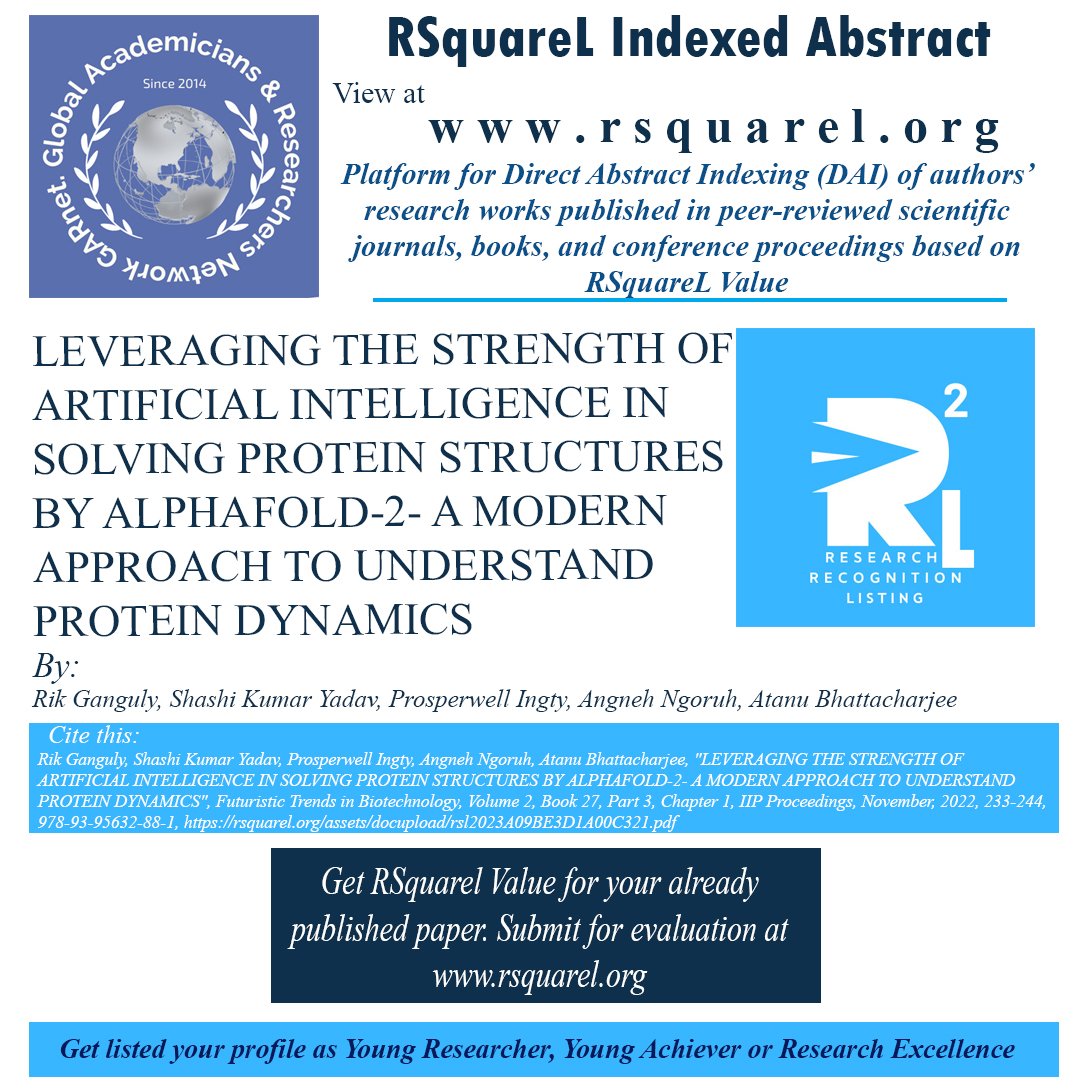editedbook
Publication: IIP Proceedings Year: 2022, Month: November Page No: 233-244, ISSN/ISBN: 978-93-95632-88-1, DOI/Link: https://rsquarel.org/assets/docupload/rsl2023A09BE3D1A00C321.pdf
LEVERAGING THE STRENGTH OF ARTIFICIAL INTELLIGENCE IN SOLVING PROTEIN STRUCTURES BY ALPHAFOLD-2- A MODERN APPROACH TO UNDERSTAND PROTEIN DYNAMICS
Area/Stream: Biotechnology, Authors: Rik Ganguly, Shashi Kumar Yadav, Prosperwell Ingty, Angneh Ngoruh, Atanu Bhattacharjee Keywords: Homology modeling, Artificial intelligence, Machine learning, Deep Learning, AlphaFold Book Name /series: Futuristic Trends in Biotechnology, Volume 2, Book 27, Part 3, Chapter 1Publication: IIP Proceedings Year: 2022, Month: November Page No: 233-244, ISSN/ISBN: 978-93-95632-88-1, DOI/Link: https://rsquarel.org/assets/docupload/rsl2023A09BE3D1A00C321.pdf
Abstract:
Proteins are unique macromolecules made up of a long chain of amino acids and are classified based on their function, structure, shape, chemical composition and solubility in different solvents. A wide variety of proteins are prone to misfold and create intracellular or extracellular aggregates that cause severe cellular malfunction. The importance of the protein folding problem was recognized and put forward 50 years back by distinguished scientists. Understanding the dynamics of protein folding is crucial and this can help us predict the ultimate configuration of functional protein. Many of the life-threatening diseases are caused by the misfolding of proteins. The reason for the misfolding can be point mutations since the three-dimensional structure of proteins depends on the primary sequence of its amino acid. Despite fifty years of research, we still need to fill the knowledge gap and accelerate our understanding, particularly in computational biology for the accurate prediction of protein structure. Homology modeling is utilized to predict protein structure in absence of experimental structure. Artificial intelligence, machine learning, and deep learning are being used extensively by researchers to computationally estimate a protein's structure based only on its amino acid sequence. AlphaFold which is in a second iteration tool has changed the perception about protein folding by solving the unsolved structures.
Cite this: Rik Ganguly, Shashi Kumar Yadav, Prosperwell Ingty, Angneh Ngoruh, Atanu Bhattacharjee,"LEVERAGING THE STRENGTH OF ARTIFICIAL INTELLIGENCE IN SOLVING PROTEIN STRUCTURES BY ALPHAFOLD-2- A MODERN APPROACH TO UNDERSTAND PROTEIN DYNAMICS", Futuristic Trends in Biotechnology, Volume 2, Book 27, Part 3, Chapter 1, November, 2022, 233-244, 978-93-95632-88-1, https://rsquarel.org/assets/docupload/rsl2023A09BE3D1A00C321.pdf
Views: 12001
Download File
News
